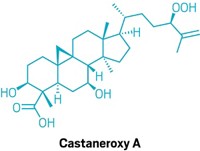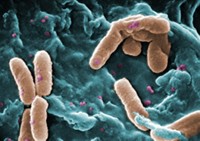Advertisement
Grab your lab coat. Let's get started
Welcome!
Welcome!
Create an account below to get 6 C&EN articles per month, receive newsletters and more - all free.
It seems this is your first time logging in online. Please enter the following information to continue.
As an ACS member you automatically get access to this site. All we need is few more details to create your reading experience.
Not you? Sign in with a different account.
Not you? Sign in with a different account.
ERROR 1
ERROR 1
ERROR 2
ERROR 2
ERROR 2
ERROR 2
ERROR 2
Password and Confirm password must match.
If you have an ACS member number, please enter it here so we can link this account to your membership. (optional)
ERROR 2
ACS values your privacy. By submitting your information, you are gaining access to C&EN and subscribing to our weekly newsletter. We use the information you provide to make your reading experience better, and we will never sell your data to third party members.
Synthesis
Small Molecules Bust Biofilms
September 5, 2005
| A version of this story appeared in
Volume 83, Issue 36
Two small molecules that block the formation of life-threatening biofilms of gram-negative bacteria have been identified by chemists at the University of Wisconsin, Madison. Biofilms are drug-impervious bacterial communities that underlie a wide variety of chronic infections. Efforts to block biofilm formation with small molecules have focused largely on analogs of N-acyl L-homoserine lactones (AHLs), bacterial signaling molecules that regulate the chemical communication system (known as quorum sensing) that triggers biofilm formation in gram-negative bacteria. Helen E. Blackwell and coworkers at Wisconsin now have developed a facile and flexible solid-phase synthetic route to a wide range of AHL analogs (J. Am. Chem. Soc. 2005, 127, 12762). Two of these analogs (shown) strongly inhibit the formation of Pseudomonas aeruginosa biofilms, the root cause of often-fatal lung infections in cystic fibrosis sufferers. "By facilitating the production of focused combinatorial libraries of AHL analogs, our route should dramatically accelerate the discovery of new molecules that modulate quorum sensing and biofilm formation," Blackwell says.







Join the conversation
Contact the reporter
Submit a Letter to the Editor for publication
Engage with us on Twitter